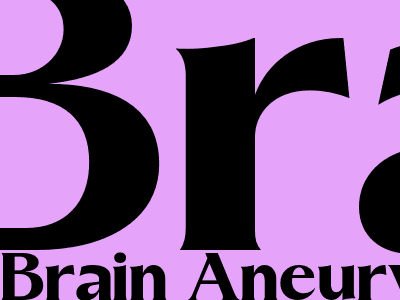
Brain Aneurysm Causes
What is a brain aneurysm?
A brain aneurysm is a weakened area in a blood vessel in the brain that bulges or balloons outward. Brain aneurysms can occur anywhere in the brain, but they are most common in the arteries at the base of the brain. Brain aneurysms can range in size from small to large, and they can be either saccular (round) or fusiform (spindle-shaped).
What causes a brain aneurysm?
The exact cause of brain aneurysms is unknown, but there are several risk factors that can increase your risk of developing one. These risk factors include:
- Smoking
- High blood pressure
- High cholesterol
- Diabetes
- Obesity
- Family history of brain aneurysms
Some medical conditions can also increase your risk of developing a brain aneurysm, such as:
- Atherosclerosis (hardening of the arteries)
- Vasculitis (inflammation of the blood vessels)
- Polycystic kidney disease
- Marfan syndrome
What are the symptoms of a brain aneurysm?
Most brain aneurysms do not cause any symptoms. However, some brain aneurysms can cause symptoms, such as:
- Headache
- Nausea and vomiting
- Stiff neck
- Blurred vision
- Double vision
- Speech problems
- Weakness or numbness on one side of the body
- Seizures
How is a brain aneurysm diagnosed?
Brain aneurysms are typically diagnosed with a CT scan or MRI scan. These scans can show the size and location of the aneurysm. Your doctor may also order an angiogram, which is a special X-ray that can show the blood flow in the brain. Discuss with your doctor what type of treatment is best depending on the location and size of the aneurysm.
How is a brain aneurysm treated?
Treatment for a brain aneurysm depends on the size and location of the aneurysm. Treatment options include:
- Observation: If the aneurysm is small and does not cause any symptoms, your doctor may recommend observation. This means that you will have regular checkups to monitor the aneurysm and make sure that it is not growing or causing any problems.
- Surgery: If the aneurysm is large or is causing symptoms, your doctor may recommend surgery to clip or coil the aneurysm. Clipping involves placing a small metal clip at the base of the aneurysm to prevent blood from flowing into it. Coiling involves inserting a small wire coil into the aneurysm to fill it up and prevent blood from flowing into it.
- Endovascular embolization: This is a less invasive procedure that can be used to treat some brain aneurysms. Endovascular embolization involves inserting a small catheter into the artery that leads to the aneurysm and then releasing a material that blocks the blood flow to the aneurysm.
What is the outlook for someone with a brain aneurysm?
The outlook for someone with a brain aneurysm depends on the size and location of the aneurysm, as well as the severity of any symptoms. If the aneurysm is small and does not cause any symptoms, the outlook is good. However, if the aneurysm is large or is causing symptoms, the outlook can be more serious.
The following factors can affect the outlook for someone with a brain aneurysm:
- The size of the aneurysm
- The location of the aneurysm
- The severity of any symptoms
- The type of treatment received
With proper treatment, most people with a brain aneurysm can live a full and active life. However, some people may experience long-term problems, such as memory loss, difficulty concentrating, or weakness on one side of the body.